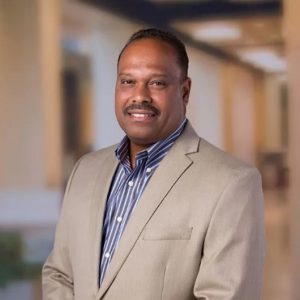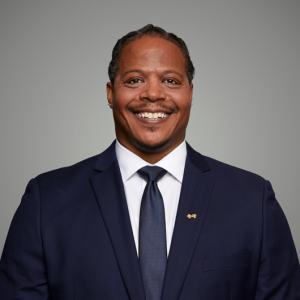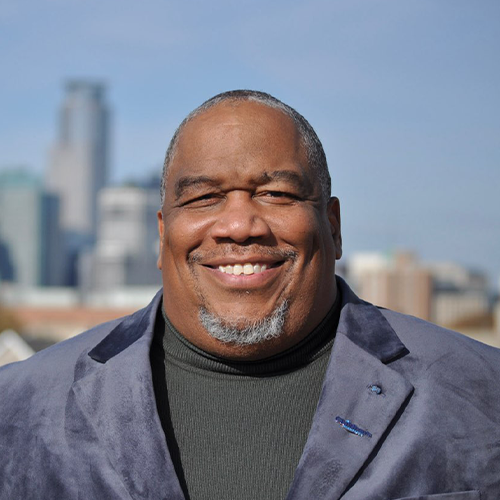Why does health equity matter?
Bukata Hayes: Health equity work is an acknowledgment that our system can be better, that we can get better outcomes for everyone. You can’t change anything unless you face it and then determine what the best interventions are. Historically we haven’t gotten the outcomes we’ve wanted and now we’re working more intentionally to get those.
Mike Currie: Health equity matters because it’s necessary in order to best achieve the quadruple aim: improving outcomes, improving patient experience, improving provider experience and lowering costs. And it allows the health system as a whole to work as efficiently and effectively as it should.
Where have you seen progress in health equity?
Mike Currie: I’ve been involved in population health management for close to 30 years. Over the last five years, I’ve seen the greatest amount of accelerated adoption, energy and momentum. We all know that the most significant amount of expansion of this understanding of health equity in addressing health disparities is associated with the killing of George Floyd and all the COVID disparities. Those were huge accelerants for this work. But it would be disingenuous for me to say that I didn’t see areas of improvement, adoption and acceleration prior to that.
But efforts prior to 2020 were mostly in the health care space. Post 2020, you see more understanding, appreciation and effort associated with advancing health equity in many domains that have nothing to do with health care, like education and banking. Many different businesses are leaning into advancing health equity. Some of them are very heavily focused on diversity, equity and inclusion. Some are very focused on inclusion and research. Some are very focused on education and health literacy. All of us involved in this space are seeing the proliferation of work to advance health equity across a number of different business categories. And 2020 was absolutely the accelerant for that.
Bukata Hayes: The fact that we see many other areas and sectors asking, “How can we play our part?” is evidence of the credibility of health equity in general. It’s also a really important sign of progress that others see their connection and intersection to the work and a path to improve outcomes. As we address social determinants of health and health equity, we’ll see better outcomes for all of those who engage with it.
What’s the biggest obstacle you see in your work?
Bukata Hayes: Making the work essential and thoroughly integrated within our enterprises. That’s critical. Health inequities cost our system a ton. There’s the cost within health care, but then also the cost to society in missed work, lack of productivity on the job, etc.
As we do this work with increased focus, our budgets and organizational structures need to reflect that the work is essential and critical. Resources are an obstacle. Structure is an obstacle. If you’re in a matrixed or hierarchical organization, where is the work positioned and is it able to have an influence?
Mike Currie: The biggest obstacle associated with this work is resourcing it properly. Not just for the next 12 months or so, but for the next 3 to 5 years. And this work must also be situated in the organization at a level where it can influence other areas within the organization in the most appropriate and efficient ways.
How can we create more opportunities for Black, Latino, Asian and Native people to work in health care and what are your organizations doing to make that happen?
Mike Currie: There’s no substitute for offering financial support to individuals so they can pursue their educational goals. United Health Foundation has committed $100 million over 10 years to support individuals from underserved communities with scholarships for those who want to go into the health care field and funding for additional training, degrees and credentials for people already in the health care space.
Bukata Hayes: Blue Cross Blue Shield of Minnesota has made pipeline diversification a goal for us as an enterprise. We’ve invested in scholarships in higher ed, local colleges and universities, as well as Historically Black Colleges and Universities. We’ve invested in internships and early exposure opportunities at local health systems. We’re playing both the long game and the short game: how do we secure diverse talent immediately, and then how do we invest in long term pipeline sustainability, providing folks with opportunities to gain the skills, the experience, the expertise to make the transition into health care and work in health equity?
Last thoughts
Bukata Hayes: BIPOC people have borne the brunt of inequities and still they find a way to persist. So as health care partners, it’s important for us to listen, learn and partner in a new way. The BIPOC community has the answers. So how do we lean in, listen and partner in a way that creates opportunities for BIPOC folks? Working with community advisory boards. Working with smaller, less-resourced entities that serve really specific communities. Traditional and what we in health care might consider non-traditional providers. How do we partner with them in a new way to bring about better health outcomes for all?
Mike Currie: When it comes to addressing health disparities, if not now, when? And if not you, who?



